This website provides a real-time monitor of geomagnetic activity in the Edmonton area (though larger activity can be seen Alberta-wide). Join over 100,000 people using our free email alert service to know if there may be aurora visible tonight. The current probability of witnessing an aurora tonight is: 
| 14%
| Current geomagnetic activity plots for the Edmonton region (and similar magnetic latitudes). Yesterdays information can be seen on the left, todays on the right. (Click on the image to enlarge).
|
|
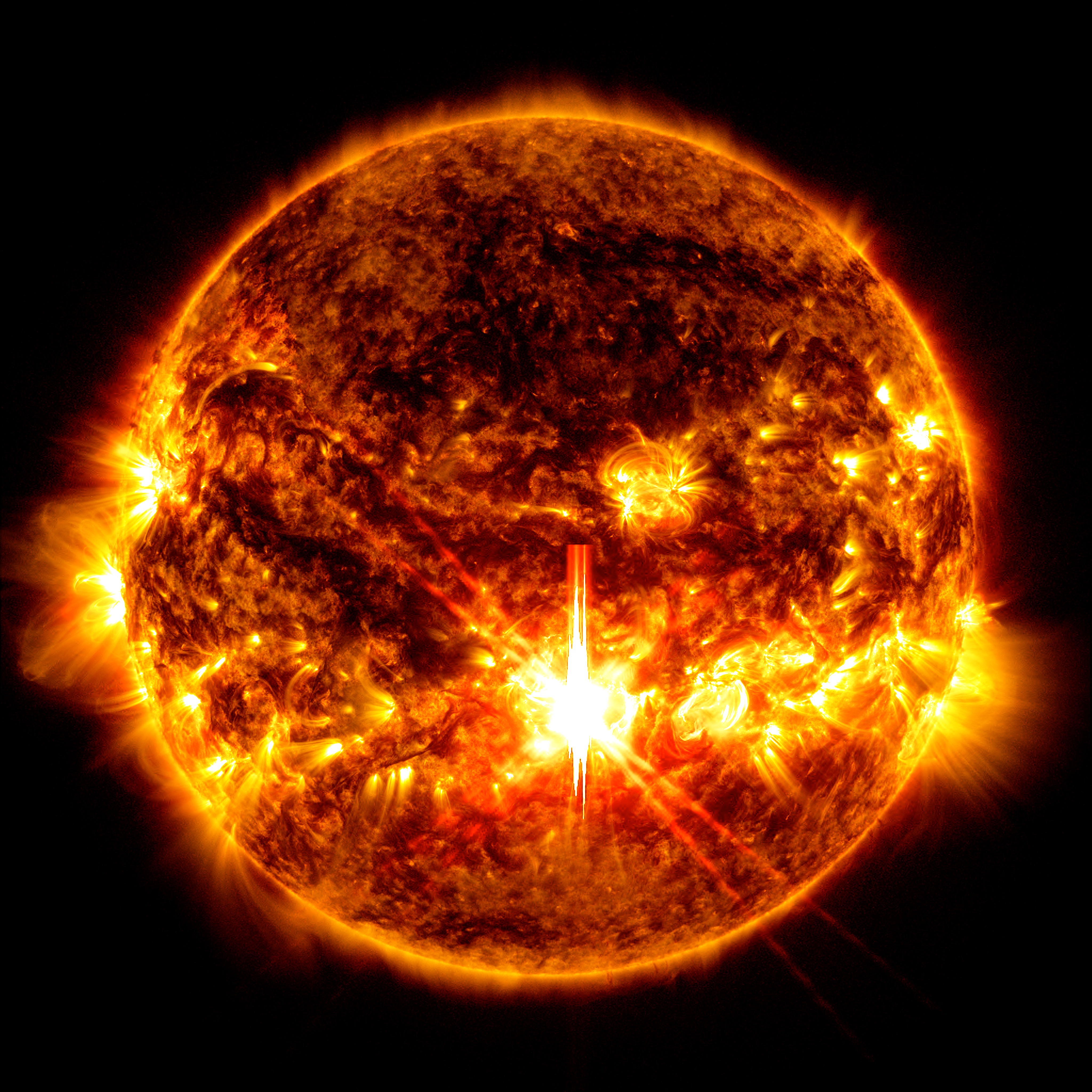 This weekend (Oct 4th–6th, 2024)
should be a very good weekend for aurora spotting. 2 CMEs are in bound and will arrive on Oct 4 and Oct 6. This will
likely result in some pretty impressive aurora at our latitude, if the clouds are willing. This weekend (Oct 4th–6th, 2024)
should be a very good weekend for aurora spotting. 2 CMEs are in bound and will arrive on Oct 4 and Oct 6. This will
likely result in some pretty impressive aurora at our latitude, if the clouds are willing.
|
|
Read more...
|
|
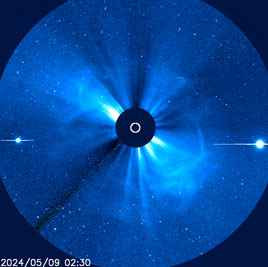 This weekend (May 11–12, 2024) has the potential to be the best chance for us to view the Aurora for many years. This week a huge sunspot cluster has been very active and has generated multiple coronal mass ejections. All these ejected particles will start interacting with the Earth's magnetic field this weekend, leading to (potentially) the best chance to witness the Aurora for years. And the weather should be fine. And the mosquitoes are not out yet! And it should get dark at a reasonable hour! This weekend (May 11–12, 2024) has the potential to be the best chance for us to view the Aurora for many years. This week a huge sunspot cluster has been very active and has generated multiple coronal mass ejections. All these ejected particles will start interacting with the Earth's magnetic field this weekend, leading to (potentially) the best chance to witness the Aurora for years. And the weather should be fine. And the mosquitoes are not out yet! And it should get dark at a reasonable hour!
|
|
Read more...
|
|
|
This years DASP conference and workshop will be taking place in Edmonton, Feb 20–23, 2024. For more information, please visit https://dasp.spacephysics.ca. |
|
|
There was a very weak CME impact yesterday, that caused very weak Aurora near dawn, but not the large impact expected from the emission on Thursday. The disturbance was not enough to trigger and Aurorawatch alert. Conditions may remain disturbed for this evening leading to a slightly elevated chance, but unlikely to be the big storm we were expecting. So it looks like no treat for us this Halloween after all...
|
|
|
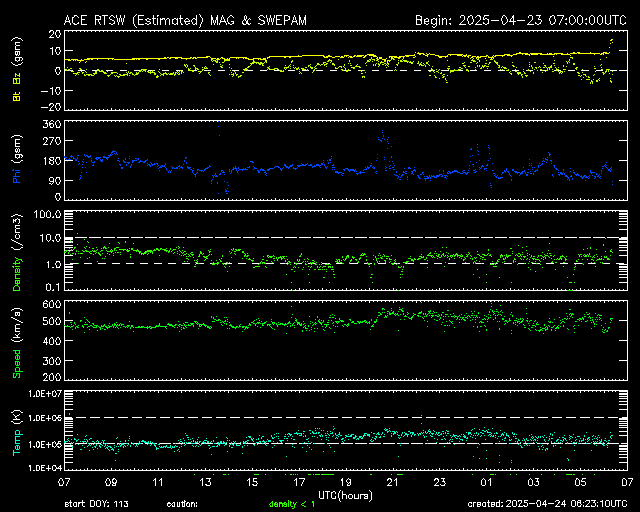 The solar wind (particles that constantly stream outward from the sun) has a typical speed of 400 km/s. A coronal mass ejection (CME—the emission from the sun that causes Aurora) typically has a speed of 1000-2000 km/s.
The solar wind (particles that constantly stream outward from the sun) has a typical speed of 400 km/s. A coronal mass ejection (CME—the emission from the sun that causes Aurora) typically has a speed of 1000-2000 km/s.
The ACE satellite sits 1.4M km sunward from Earth, measuring the solar wind speed. You can see the data here: ACE SWEPAM DATA. The yellow trace shows the current solar wind speed and when this rapidly increases well above 400 km/s then the CME is 15 minutes away! |
|
|
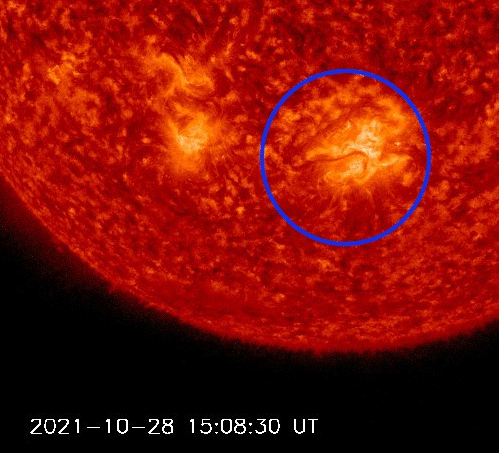 Potentially good viewing for Halloween 2021. A coronal mass ejection that occurred on Thursday (Oct 28, 2021) is heading Earthward and should arrive at some time on Saturday. This increases the chances of seeing Aurora for Saturday, Sunday and possibly Monday.
Potentially good viewing for Halloween 2021. A coronal mass ejection that occurred on Thursday (Oct 28, 2021) is heading Earthward and should arrive at some time on Saturday. This increases the chances of seeing Aurora for Saturday, Sunday and possibly Monday.
Weather conditions, as of the Friday, are favourable, with clear skies forecast.
|
|
|
|





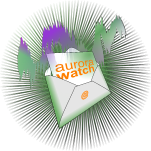

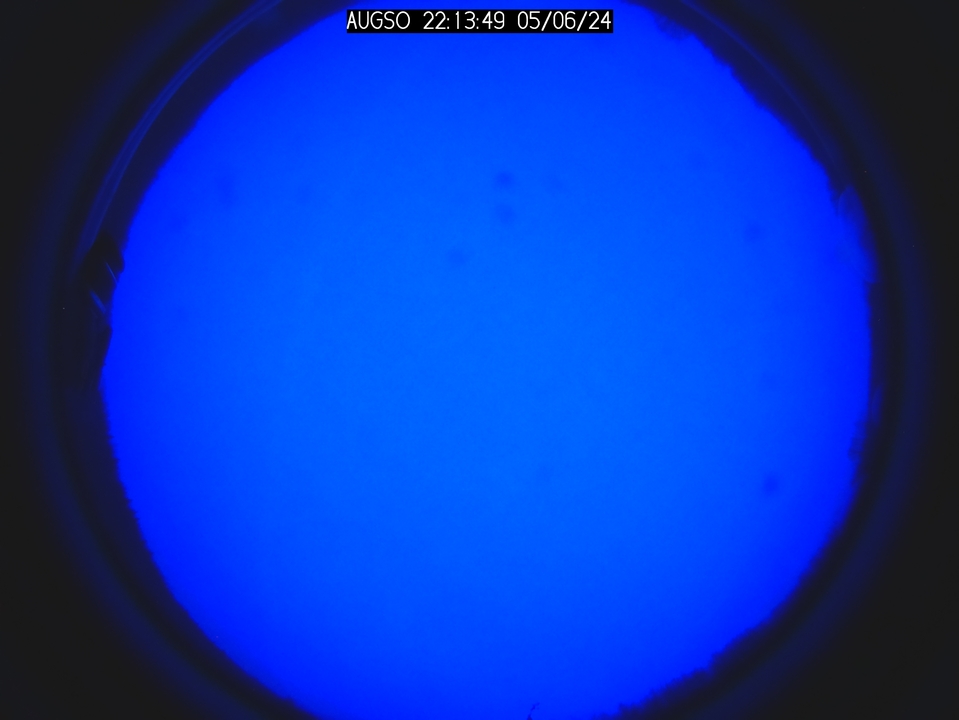

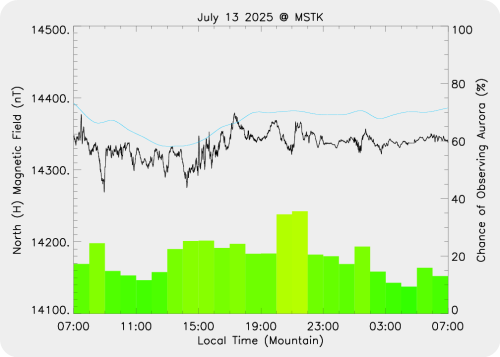
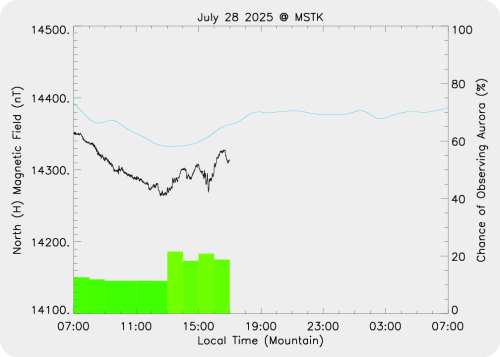

 This weekend (May 11–12, 2024) has the potential to be the best chance for us to view the Aurora for many years. This week a huge sunspot cluster has been very active and has generated multiple coronal mass ejections. All these ejected particles will start interacting with the Earth's magnetic field this weekend, leading to (potentially) the best chance to witness the Aurora for years. And the weather should be fine. And the mosquitoes are not out yet! And it should get dark at a reasonable hour!
This weekend (May 11–12, 2024) has the potential to be the best chance for us to view the Aurora for many years. This week a huge sunspot cluster has been very active and has generated multiple coronal mass ejections. All these ejected particles will start interacting with the Earth's magnetic field this weekend, leading to (potentially) the best chance to witness the Aurora for years. And the weather should be fine. And the mosquitoes are not out yet! And it should get dark at a reasonable hour!
 Potentially good viewing for Halloween 2021. A coronal mass ejection that occurred on Thursday (Oct 28, 2021) is heading Earthward and should arrive at some time on Saturday. This increases the chances of seeing Aurora for Saturday, Sunday and possibly Monday.
Potentially good viewing for Halloween 2021. A coronal mass ejection that occurred on Thursday (Oct 28, 2021) is heading Earthward and should arrive at some time on Saturday. This increases the chances of seeing Aurora for Saturday, Sunday and possibly Monday.
 Aurora Watch Website. Version 1.0.
Aurora Watch Website. Version 1.0.